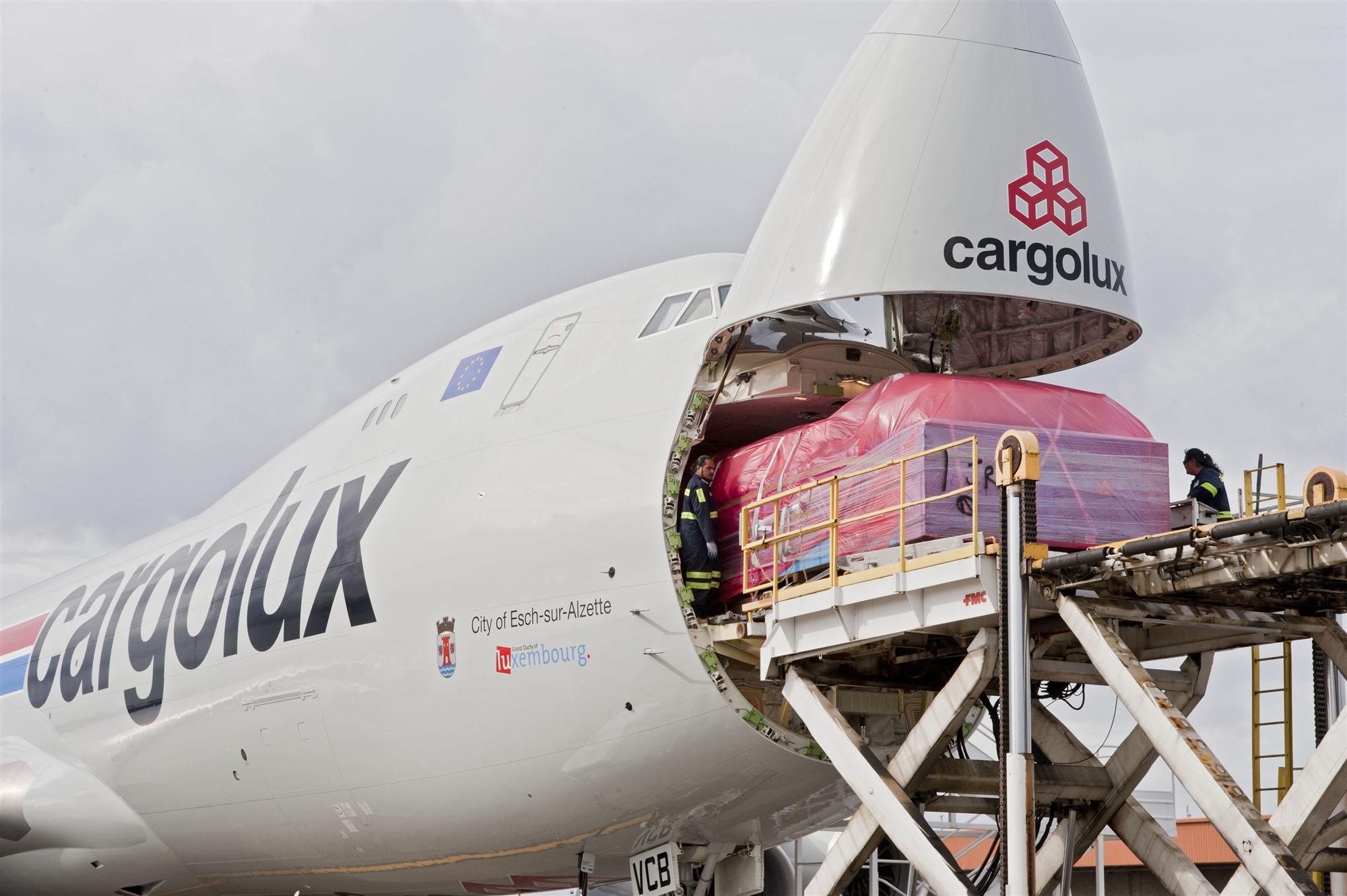Slot constraints have hampered freighter activities at major Asian gateways like Beijing, Shanghai and Hong Kong recently, forcing operators to alternative airports. The picture is also changing at the North American end of the supply chain. In the US, smaller airports are rolling out the welcome mat for international all-cargo carriers.
Lambert International Airport in St. Louis has seen a sharp spike in international freighter operations lately. September brought in two Boeing 747-8 charter flights by AirBridgeCargo. In addition, Lambert hosted its first Antonov An-124 flight in five years.

In the first nine months of this year, cargo charter activity at Lambert was up 30%, while the average weight of cargo on flights rose almost fourfold.
The airport authority attributes the rise in traffic to the automotive and aerospace sectors, which are reportedly on a roll.
“The recent growth in total charter tonnage, the regular appearance of larger aircraft and the heavier loads being carried all point to a growing recognition of using St. Louis Lambert for cargo charters,” said cargo development director David Lancaster.
For him, a former cargo manager of defunct airline TWA, the increased cargo activity is reminiscent of the time when Lambert was the airline’s home base.
“With this upsurge in charter activity, the recent opening of our livestock handling centre, the imminent launch of new international services by WOW and the steady growth of non-stop domestic markets, the prospects for cargo through STL look better than at any time since the closure of TWA’s hub operations in 2002,” he commented.
Pittsburgh International Airport managed to secure a scheduled international freighter link. On October 12, it welcomed its first direct connection to the Middle East and beyond when a 777 freighter of Qatar Airways touched down on the tarmac to start a twice-weekly operation. The flights arrive in the US city from Doha with stops in Luxembourg and Atlanta and go directly back to Qatar.
According to the airport authority, the area’s industrial base has diversified in recent years to include sectors that regularly use air freight such as energy, robotics, life sciences and healthcare.
Rickenbacker, the all-cargo airport of Columbus, Ohio, has long been a gateway for charters carrying garments from Asia for distribution on the US East Coast, but in recent years it managed to shore up scheduled freighter operations by Cathay Pacific, Emirates and Cargolux, which add up to almost a dozen weekly widebody flights. These were based on inbound traffic, so the airport authority has focused much energy on developing exports to generate better utilization for these carriers. The effort appears to be bearing fruit, to judge from a 42% surge in outbound volumes recorded in August.

Overall, Rickenbacker’s throughput climbed 26% in August. The established trio of international carriers were joined by Etihad, which ran twice-weekly charters to Europe and the Middle East for Trinity Logistics.
New York’s Stewart Airport, which the Port Authority of New York & New Jersey would like to develop into a gateway for international freighter operations to alleviate congestion at JFK, has failed to attract cargo carriers but it does appeal to integrators. DHL has signed a 10-year lease for a 20,625 sq ft building next to the existing facilities of FedEx and UPS. The company has indicated that it is going to invest US$400,000 at the airport, which is located 60 miles north of New York City.
Several large US gateways are currently beefing up their cargo capacity.
Atlanta’s Hartsfield-Jackson International Airport is adding 1 million sq ft of warehouse space with the construction of three cargo buildings, which will come on stream between 2017 and 2021. The US$200 million project includes a new vehicle staging area to alleviate truck congestion at the airport.
Seattle-Tacoma International Airport has scant room to build additional facilities, which has forced the airport authority to focus on measures to improve productivity, but this summer work started on two air freight warehouses with a combined footprint of 458,500 sq ft. They are rising on a 26-acre site in the nearby city of Burien, which has been designated the Northeast Redevelopment Area and will house storage, processing, airport services and logistics related to aviation.
Meanwhile, a major drive is underway to boost perishables throughput at Dallas/Ft.Worth after Dubai-based handling giant dnata, which handles over 2.8 million tonnes of cargo at 42 airports around the world, signed an agreement with cargo facility developer Lynxs to acquire its AirLogistix USA handling business at Houston’s George Bush Intercontinental Airport. As part of the transaction, dnata has pledged to open a 37,000 sq ft cargo terminal at DFW with a large perishables handling facility, copying Airlogistix’s setup at Houston. That facility handled over 16,000 tonnes of perishables last year.
Operators are bullish on perishables flows through DFW. American Airlines, which has been building up perishables traffic from Latin America to Asian markets, added a second cooler at the airport.
By Ian Putzger
Air Freight Correspondent | Toronto